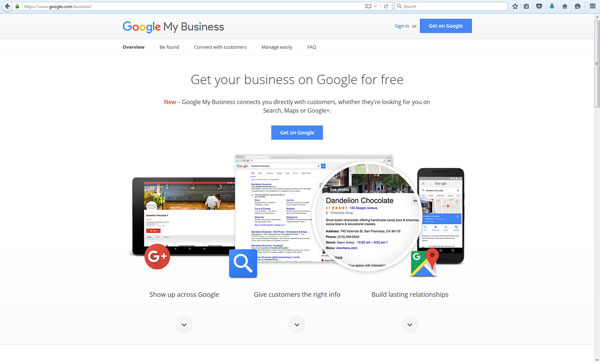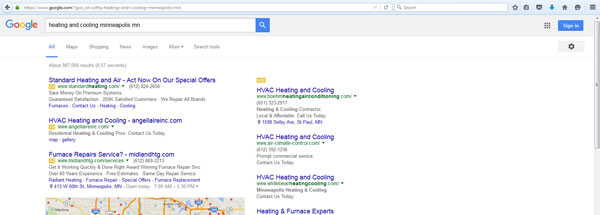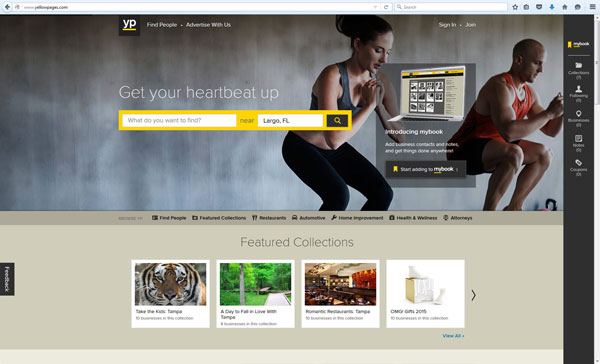Local Marketing & PR :: Internet
Building a Successful Website
Start by asking yourself these questions:
- What is the purpose of this site?
- Do I want to sell products (an e-Commerce solution) or do I merely want to post company information (known in the industry as "brochureware")?
- How much money am I willing to commit right now? How much a year from now or two years from now?
- What will happen if I don't take any action at all?
To help ensure that you receive a return on your investment when you embark on a Web engagement, refer to the following Web marketing strategy known as Audience Development. Audience Development consists of the following elements:
- Paid Online Advertising: This starts with a media strategy – identifying the properties that best reach your target audience. This is backed up by a placement program and implementation of the campaign to make sure that your placements occur on the proper sites and adhere to the selected schedule.
- Promotions: Innovative Web promotions deliver branding and direct-response benefits. Promotions include incentive programs and cross-promotions with complementary partners. Implemented properly, promotions can boost your public relations exposure, increase online community awareness and enhance your other audience development channels.
- Audience Creation: Consists of organic and individual promotions that are carefully geared toward the communities you want to reach, resulting in greater mindshare and encouraging the right people to visit your site. Tools used in audience creation include optimizing your ranking with the major search engines, utilizing knowledge of on-line communities to tap focused, loyal audiences through strategic linking and tapping into public forums such as discussion groups and chat rooms.
- Design: Good Web design is a combination of form and function. A website must be aesthetically pleasing, but should also help visitors understand the products and services you offer. Good design can help make your message jump out and capture a site visitor's attention, leaving them with a lasting positive impression of your company.
- Measurement and Analysis: Digital marketing is very measurable and lets you track the effectiveness of your campaigns to optimize your site's performance. Sophisticated tracking technology can help you identify site visitors by their demographic or interests.
- Getting Online: Call your local or national Internet service provider (ISP). An ISP will host your website and help you identify a domain (URL).
Search Engine Optimization (SEO)
The process of improving quality traffic to a website from search engines via organic (non-paid) results is known as search engine optimization (SEO). The higher a website ranks "organically" in search results, the greater the chance that the site will be visited by a user. Most people do not click through pages and pages of search results, but rather limit themselves to the first 5 pages – so where a site ranks is essential for directing more qualified traffic toward the site. SEO can also target different kinds of search, including image search, local search and industry-specific vertical search engines.
How to optimize your Website:
Understanding Meta Tags
- Meta Tags: Meta elements provide information about a given Web page, most often to help search engines categorize them correctly. Search engines vary in the importance they place on meta tags. Not all meta tags are visible to someone who visits the site, although they do appear in search engine result descriptions, and also in browser headers. Meta tags tend to be inserted into the HTML or code of your website. Keep in mind that each page of your website displays different information, therefore the title, description and keyword meta tag should be different for each page. Below are the three most important meta tags that should be present in each page of your website. Please refrain from using symbols/special characters such as ™, ©, ® in meta tags.
- Key Meta Tags:
- Title: Title of your page (70 max characters)
- Description: Description of "what" is presented on the page (156 max characters)
- Keywords: Words or phrases that describe your page information (10 max words/phrases)
Each page of your website will need a Title. Once you have titled the page, you will need to add the Description and Keywords tags underneath the Title Tag. You can add/edit these meta tags by using an HTML editor such as Adobe Dreamweaver or Note Pad. If your website is built in a content management system, you may be able to modify the meta tags without directly accessing the code. The code below is provided as an example:
<html>
<head>
<title>Title of page</title>
<meta name=”description” content=”What is this page about”>
<meta name=”keywords” content=”What, words, describe, this, page,”>
</head>
Example of optimizing a page:
Title: <title>Heating and Cooling Systems – Bryant</title>
Description: <meta name=”description” content=”Bryant heating and cooling systems endure vigorous testing to ensure quality, durability and comfort.” />
Keywords: <meta name=”keywords” content=”heating and cooling systems, heating cooling, heating and cooling unit, heating and cooling supply, heating and cooling equipment, Bryant heating and cooling, central heating and cooling, Bryant heating and cooling system, home heating and cooling, home heating cooling system” />
As mentioned above, not all meta tags are directly visible to a user. The title and description tend to be the tags that are most often seen by a user when they are searching. The keywords are in the code of the page and not viewable unless you view the HTML source code.
Meta Tag Relevancy: All of the above meta tags must be relevant to each other and the content displayed on the page. A search engine will not prioritize a page if the tags do not correspond to the content on the page.
Optimizing your site for local searches requires additional expertise. We recommend that you enlist the assistance of an SEO expert if you would like to optimize your website for local searches.
Search Engine Marketing (SEM)
Search Engine Marketing, or SEM, is buying keywords or phrases that guarantees paid placement in search engine results. Priced on a Cost-Per-Click basis, keyword prices can range from $.10 - $5.00+. Some of the major Search Engines that offer SEM:
- Bing
- Yahoo
There are many other search engines available, but they tend to be powered by Bing or Google.
Why SEM?
SEM offers extremely fast, flexible, accurate and measurable advertising, which leads to the best cost effectiveness in lead generation advertising.
SEM Benefits:
Market reach, cost effectiveness, high resolution tracking, timing and flexibility can be affected quickly with paid search advertising. Paid search programs such as Google Adwords, Yahoo! and Bing provide organizations with a local-to-global high volume market reach while maintaining control over the individual keyword cost per click, overall spend and advertising zones and times. Flexibility of changing ads, rules and campaign settings almost immediately enables sophisticated marketers to maximize profitability.
Set-Up:
- Google AdWords: You can sign up by going to adwords.google.com and clicking on the "Start now" button.
- Bing/Yahoo: You can sign up by going to advertise.bingads.microsoft.com and clicking on the "Sign up for Bing Ads" button.
Where will your ad appear?
Locations:
- Top of Search Page (Max placements: 3)
- Right Hand Side of Search Page (Max placements: 8-10)
- Bottom of Search Page (Max placements: 3)
Google My Business
Attract local customers searching for what you offer. Where do people look for local businesses like yours? Online. With Google My Business, Google delivers your company information across the Google search network.

Your company can be listed with Google My Business without setting up Adwords, or you can use Adwords to feature your business listing. With AdWords, you pick keywords that describe your business. When users search for those keywords on Google Maps, your ads are eligible to appear directly on the map along with an image related to your business.
Control your budget. Pay only for results. AdWords has no minimum spending requirement – the amount you pay for AdWords is up to you. You can, for instance, set a daily budget of five dollars and a maximum cost of ten cents for each click on your ad.

Getting started is easy. If you already have an AdWords account, just make sure your business is listed accurately in Google Maps. Once you're listed, you'll be ready to create your own local business ads.
Google My Business also allows you simply to create your free business listing. When potential customers search Maps for local information, they'll find your business: your address, hours of operation, even photos of your storefront or products. It's easy, free, and you don't need a website of your own.
- Go to: http://business.google.com/
- Login by using your Google Account
- Note: If you do not have a Google Account, you can sign up for free. To create a Google Account, click on "Create a New Google Account"
- Click on "Start Now"
- Enter the required information:
- Country
- Company/Organization
- Street Address
- City/Town
- State
- Zip Code
- Click on "Next"
- Click on "Add Listing"
- Next, add the category that is related to your business
- Add Hours of Operation (If necessary)
- Add Payment Options (If necessary)
- Add Photos (If necessary)
- Add Videos (If necessary)
- Add Additional Details (If necessary)
- Click on "Submit"
Yahoo! Local:
Yahoo! Local is a comprehensive business directory for cities complete with ratings and reviews, maps, events and more. Yahoo! Local has business reviews, top rated services and events near your location. Use interactive maps, driving directions, reviews and ratings to help users find the closest service.
How to Add Your Business Location to Yahoo Local Search:
- Go to: http://local.yahoo.com
- At the bottom of the page, click on "Add a Business"
- Enter the required information:
- Business Name
- Address
- City
- State
- Zip
- Phone Number
- Website URL
- Add Additional Information (If Needed)
- Click "Submit"
How to Add Your Business Location to YellowPages.com

- Go to http://www.yellowpages.com
- Click on "Join" in top right hand corner
- Enter info in all required fields
- You will receive an email in a few seconds
- Click on the link in the email
- Enter your information
- Create a listing
- Enter Zip Code
- Choose your business category and sub-categories
- YellowPages.com offers a free listing. YP Marketing Solutions can also work with you to create premium listings.